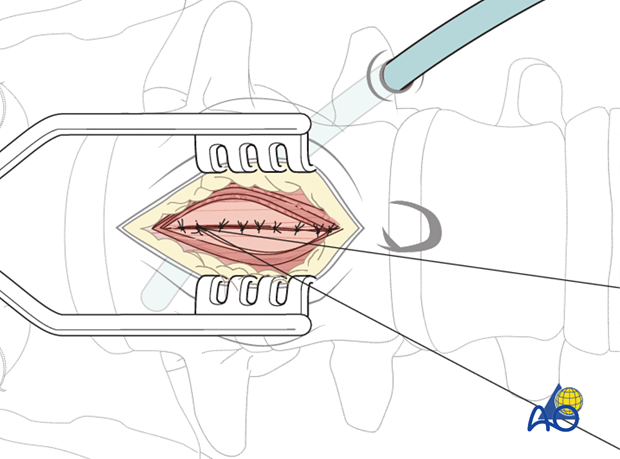Mini open retroperitoneal approach (L4-S1)
1. Preliminary Remarks
The exact incision site will depend on the level of the fracture. The disc space L1/2 and above cannot be reached with this approach.
The straight anterior approach (retroperitoneal approach) is excellent for corpectomy, spinal canal decompression, and vertebral body replacement. The lumbotomy is ideal for plating.

2. Skin incision
Under fluoroscopic control, the fractured vertebra or injured disc and the adjacent segments are marked on the skin.

In the following, alternative options for skin incisions are depicted, depending on surgeon's and patient's preference
Shown are the midline skin incision, the pararectal skin incision, and the transverse skin incision.
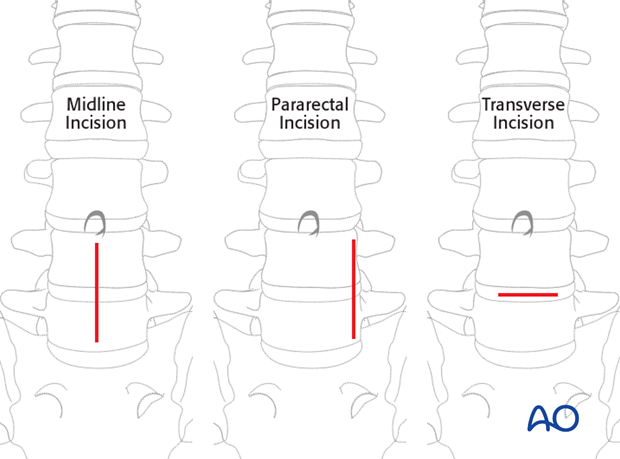
The skin is incised on the mark.
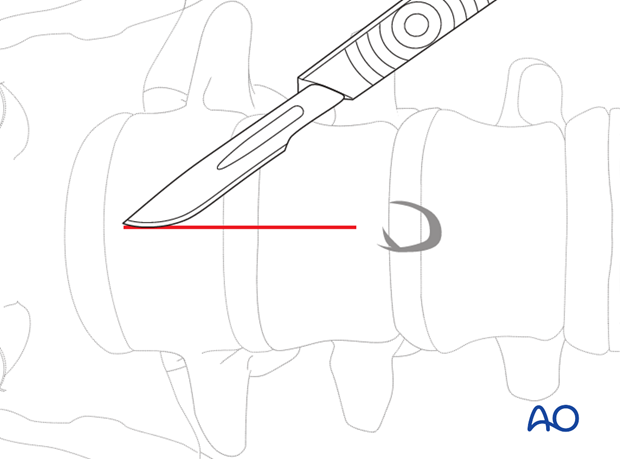
3. Exposure
After dissection of the subcutaneous tissue, the anterior rectus sheet is incised and the rectus muscle is mobilized to the medial or lateral side, depending on the incision and surgeon's preference.

The posterior rectus sheet is opened and the peritoneum is exposed.
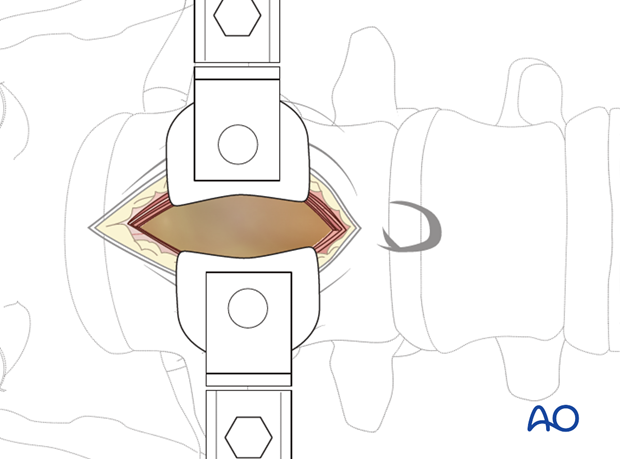
Next the peritoneum is carefully retracted using a hand.
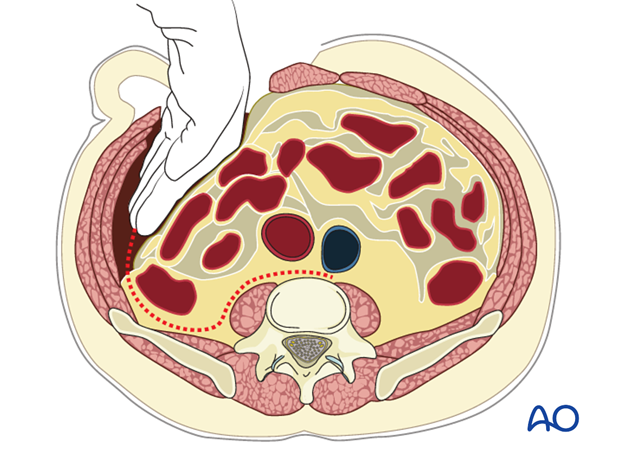
Depending on the level of the fracture, the great vessels are approached differently.
L4/5
For the L4/5 level, vessels have to be retracted to the opposite side.
L5/S1
For L5/S1, the vertebrae are accessed in between the vessels bifurcation.
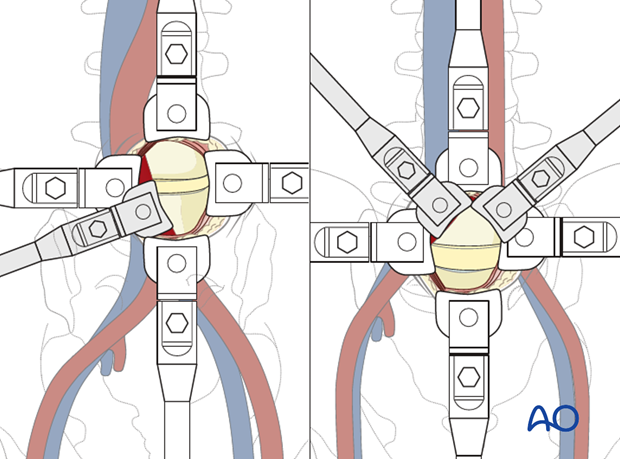
Pitfall: Iliolumbar vein
If L4/L5 is approached, the ascending iliolumbar vein should be ligated. Otherwise significant bleeding might occur.
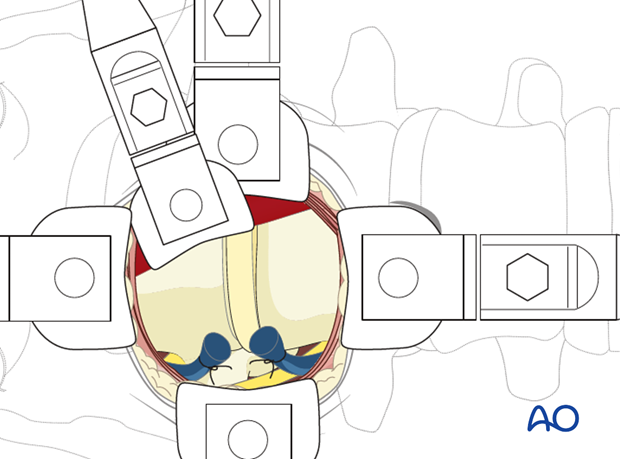
4. Retraction system
A retraction system is mandatory at this point.
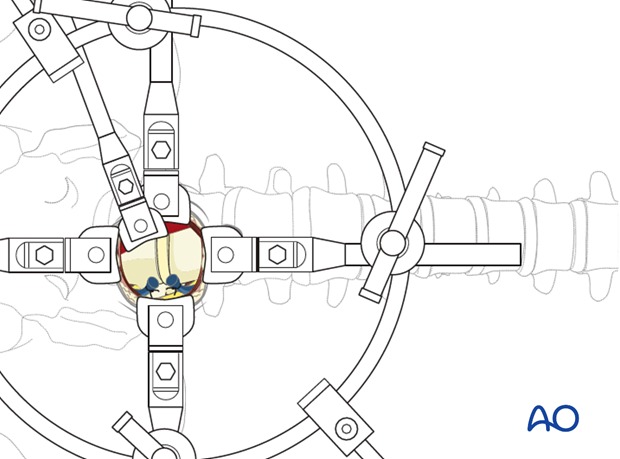
5. Closure
A retroperitoneal drain is inserted.
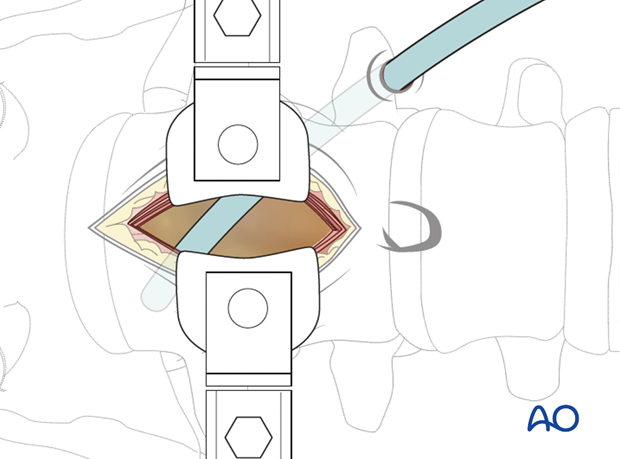
The wound is then closed in layers.
